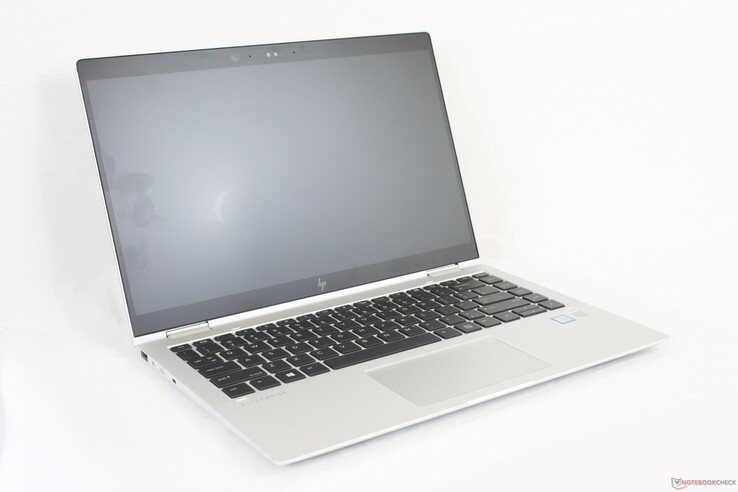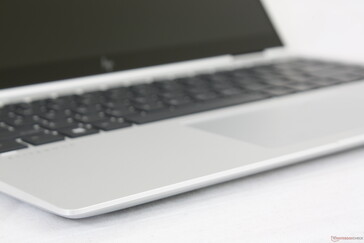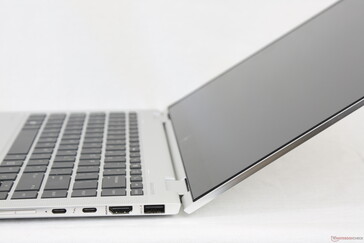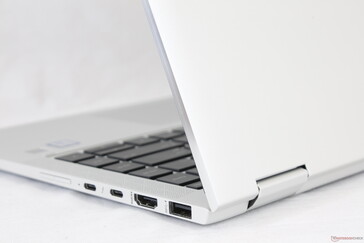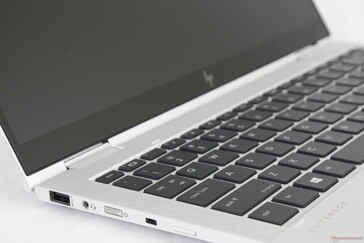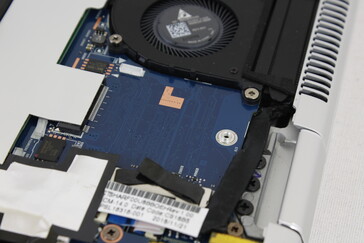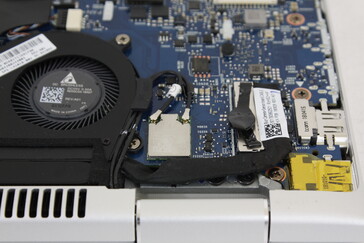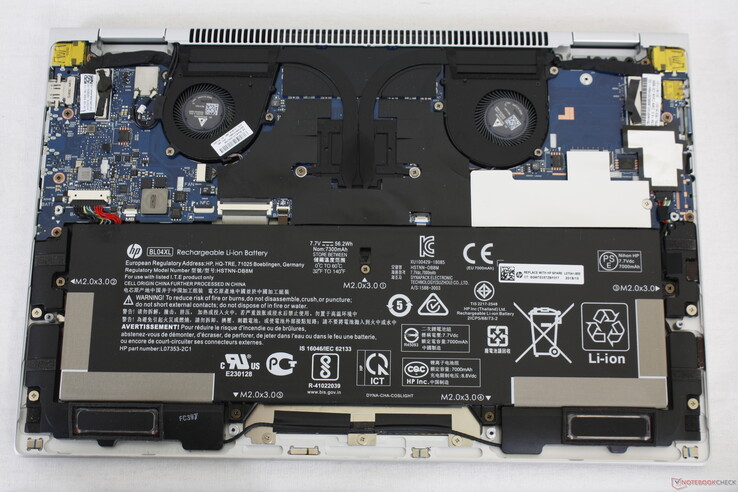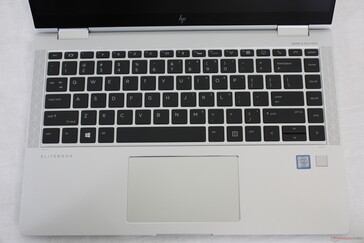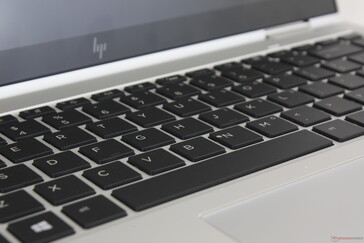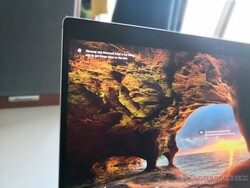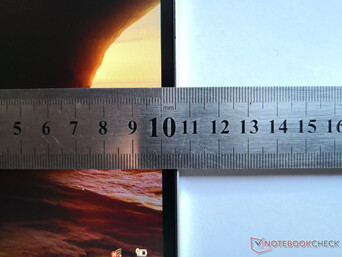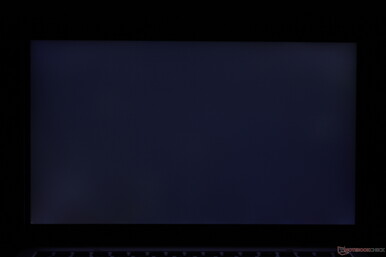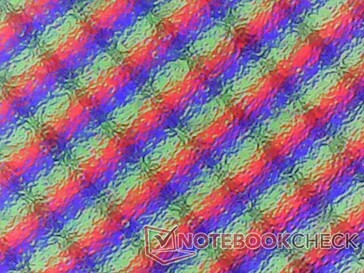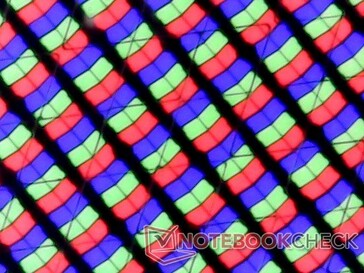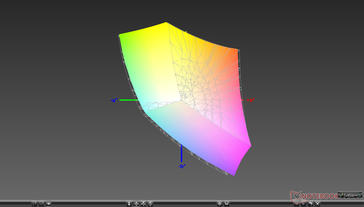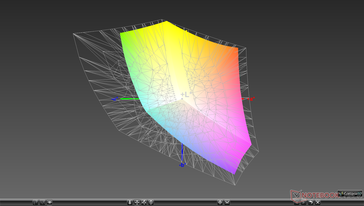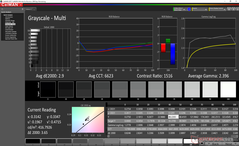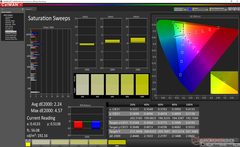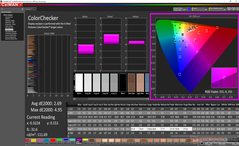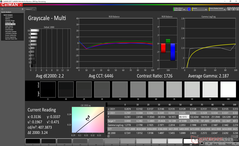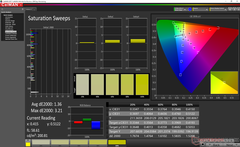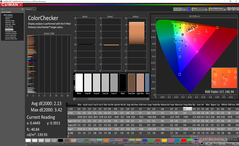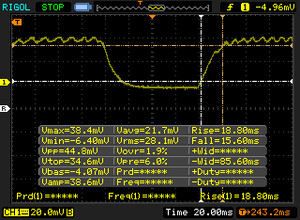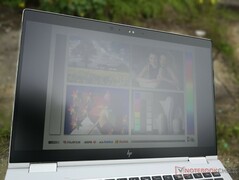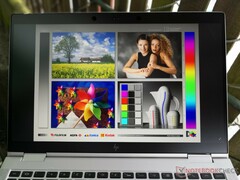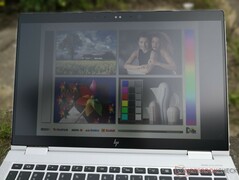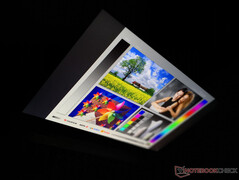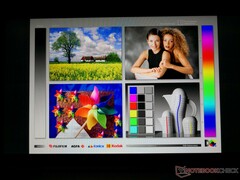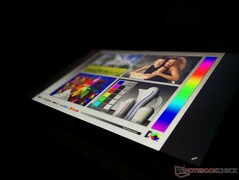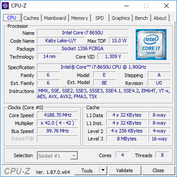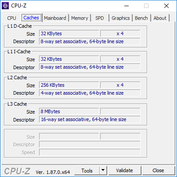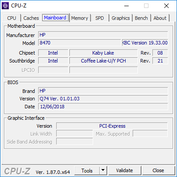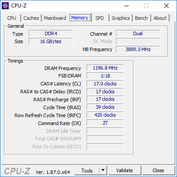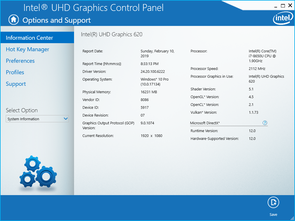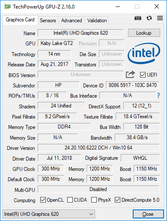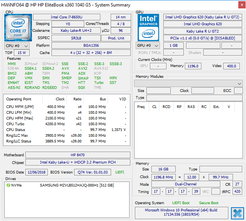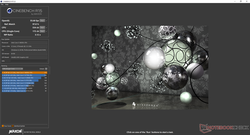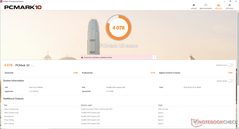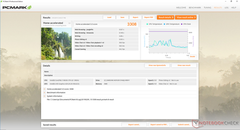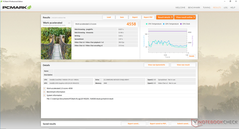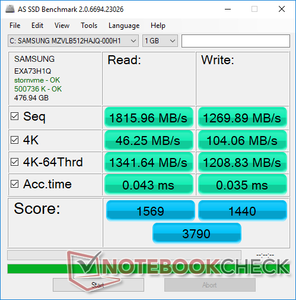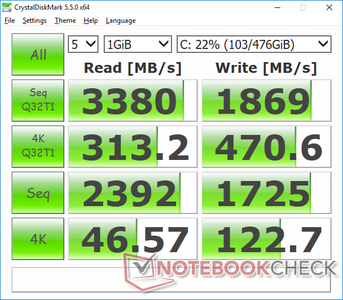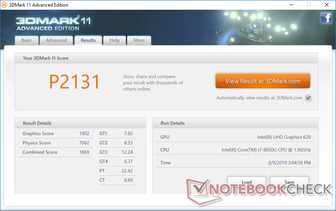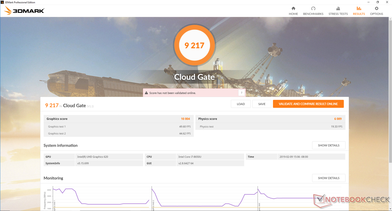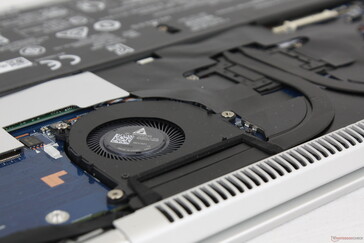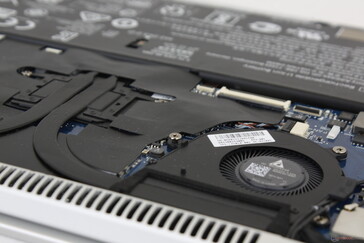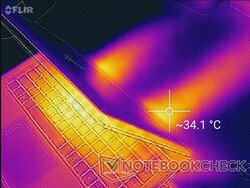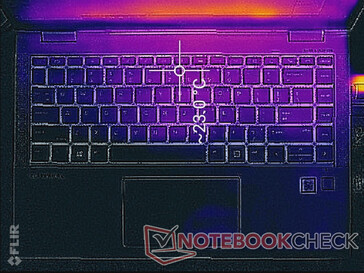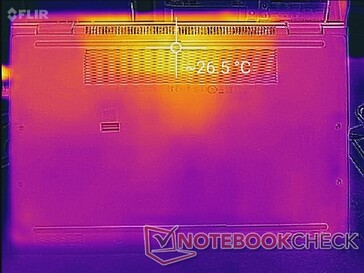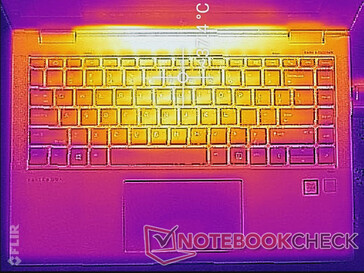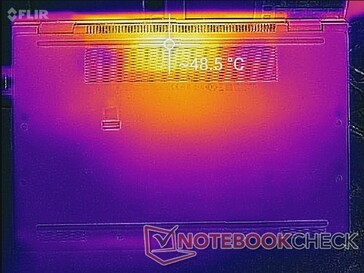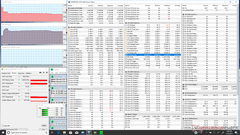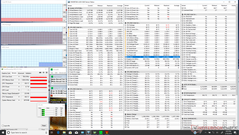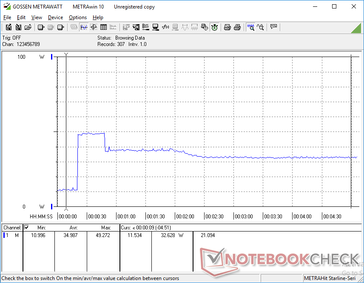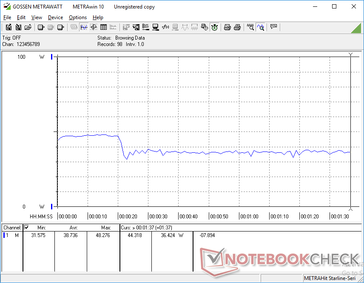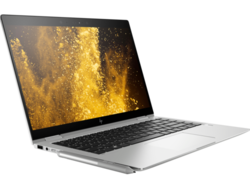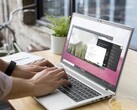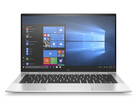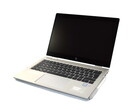HP Elitebook x360 1040 G5 (i7-8650U, FHD) Convertible Review
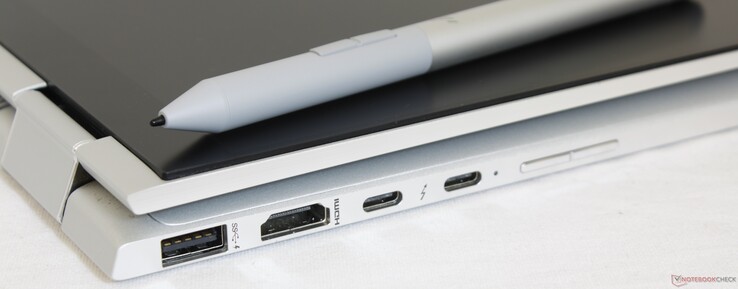
When people think of Ultrabooks or 2-in-1 laptops, the HP EliteBook x360 family doesn't often come to mind. It's a bit of a shame because the series consists of some of the best subnotebooks money can buy for both general consumers and business users alike. EliteBook models consistently top our lists of best premium office laptops, Ultrabooks, and subnotebooks.
Our test model today is the 14-inch EliteBook x360 1040 G5 to replace last year's EliteBook 1040 G4. Its biggest change is the introduction of 360-degree hinges to bring the the system more in line with last year's 13.3-inch EliteBook x360 1030 series. As such, we recommend checking out our reviews on the EliteBook x360 1030 G3 since the two models have many similarities between them both inside and out.
There is a wider selection of SKUs to choose from when compared to your typical Ultrabook. Options range from the entry-level Core i5-8250U CPU with 256 GB NVMe SSD, 8 GB DDR4 RAM, and FHD touchscreen up to the i7-8650U CPU with 2 TB of storage, 32 GB RAM, 4G LTE connectivity, and a 4K UHD touchscreen. Expect to pay anywhere between $1500 to over $2350 depending on the configuration.
Direct competitors in the flagship 14-inch business convertible space are uncommon. Plenty of 13-inch business convertibles and 14-inch consumer convertibles exist as alternatives, however, including the Lenovo ThinkPad X1 Carbon series, ThinkPad X380, Yoga C930, Samsung Notebook 9 Pen, Microsoft Surface Book 2, and the LG Gram 14.
More HP EliteBook reviews:
Case
The EliteBook x360 1040 G5 is essentially the 14-inch version of the 13.3-inch EliteBook x360 1030 G3 and so many of our existing comments still apply here. The unibody CNC aluminum chassis is firm with only minimal warping and twisting when attempting to bend its surfaces. It doesn't feel as rigid as the XPS 13, but the Dell is smaller and lacks many of the features of our HP. The 360-degree hinges are uniformly firm up to the maximum angle and the matte silver surfaces are excellent at detracting fingerprints unlike the usual darker color schemes of competitors. Very slight creaking can be heard if twisting the lid that isn't of any concern during actual use.
Construction quality is perfect with no unintended gaps, crevices, or bumps on our specific test unit. Users familiar with the Spectre x360 13 series will already have a very good idea of how the EliteBook x360 feels to hold.
When compared to the last generation EliteBook 1040 G4, the EliteBook x360 1040 G5 is slightly thicker but with narrower bezels for an overall smaller footprint. It weighs approximately the same as the Lenovo Yoga C930 at about 1.4 kg. Other 14-inch laptops like the Asus Zenbook UX430 and UX433 are slightly lighter than our HP while offering discrete graphics options. We find the system a bit heavy when using tablet mode for extended periods and we recommend taking a look at the lighter EliteBook x360 1030 G3 if weight is a priority.
Connectivity
Available ports are identical to the EliteBook 1040 G4 but slightly rearranged. The nano-SIM slot, for example, is now along the left edge where the ventilation grilles used to be. If we are to change anything about the ports, we would move one of the two Thunderbolt 3 ports to the left edge so there would be one charging port per side similar to the Razer Blade Stealth.
There is still no integrated SD card reader of any kind. Competing machines like the XPS 13 and Samsung Notebook 9 Pen are at least able to integrate MicroSD card readers.
Communication
The Intel 8265 comes standard for 867 Mbps WiFi and integrated Bluetooth 4.2. In contrast, newer Ultrabooks have already made the transition to the Intel 9260 or 9560 for transfer rates of up to 1.73 Gbps and integrated Bluetooth 5. It's a bit strange to not have such an option for a flagship EliteBook, but we otherwise experienced no connectivity issues during our time the test unit.
Intel XMM 7360 and 7560 modules are available for gigabit Cat 9 and Cat 16 4G LTE connectivity. While our test unit does not carry such an option, this is nonetheless a defining characteristic of the EliteBook x360 1040 G5 as it's something most consumer Ultrabooks are lacking. The target audience of business travelers can certainly appreciate the feature. Embedded SIM (or eSIM) would be great to see on future releases.
Security
The HP EliteBook series is filled to the brim with security features on both the hardware and software level. Users have the fingerprint reader, IR sensor, Sure View Gen 2 privacy screen to reduce viewing angles, and a dedicated "self-healing" Sure Start chip to repair the BIOS should it detect any suspicious tampering.
Accessories
Included extras are a USB Type-C to RJ-45 adapter, USB Type-C to Type-A adapter, Windows 10 Pro installation DVD, and the usual warranty card and Quick Start guide. Note that the HP Active Pen stylus is not included as it is sold separately for $76 USD. In contrast, Microsoft throws in the Surface Pen with every purchase of a Surface Pro.
Maintenance
The bottom panel requires a T5 torx wrench and a sharp edge to remove since the latches are very tight around the edges. Upgrade options are limited to the M.2 2280 and WWAN slots as RAM and WLAN are soldered. Note that the SSD is protected under the aluminum plate.
Warranty
The standard one-year manufacturer limited warranty applies if purchasing the base $1500 configuration. Higher-end configurations come with a three-year warranty as standard. Please see our Guarantees, Return policies and Warranties article for country-specific information.
Input Devices
Keyboard
The backlit keyboard on this EliteBook is one of the best we've used on any Ultrabook. HP is boasting quieter key clatter, more consistent key pressure, and less slant and wobble on each key while keeping travel at 1.3 mm. Even though we don't have the instrumentation to objectively confirm these claims, the difference can undeniably be felt. The keys here feel crisper and with firmer feedback than on competitors while being quieter than we anticipated.
Our only complaint is that the smaller Arrow keys and top row of F keys are noticeably softer and spongier than the main QWERTY keys. Of course, this fortunately does not impact the general typing experience.
Touchpad
The Precision-enabled trackpad (~11.1 x 6.5 cm) is exactly the same as on the 13.3-inch EliteBook x360 1030 G3 in both dimensions and texture. Cursor control is smooth and responsive with no sticking or jumping even when gliding very slowly. Multi-touch inputs like pinch-to-zoom are also responsive and have low latency. It's one of the smoothest trackpads we've used on a business laptop.
The integrated mouse keys are more of a mixed bag. Some users may appreciate the quiet auditory feedback when pressed, but we would have preferred a stronger tactile feedback or full-on dedicated click keys for improved accuracy much like on some traditional EliteBook models. Speaking of older models, don't expect the rubber cursor nub to make a comeback anytime soon for the x360 series, either.
Display
HP offers five very different IPS display options whereas most competing models have just a couple at most. These panels differ in resolution, reflectance, brightness, and even refresh rate. Our table below summarizes the options available and we recommend choosing wisely as each touchscreen panel offers unique advantages over the others.
Regardless of choice, all panels integrate Corning Gorilla Glass 5 with 100 percent sRGB coverage including the matte options. Matte touchscreens are rarely found on consumer devices (the Toshiba Portégé X20W comes to mind), but HP is promising improved durability against touch and pen inputs with its matte etched glass solution.
The test unit we have today uses the less expensive 'option 1' panel below with the matte etched glass anti-glare overlay. Its AU Optronics AUO533D IPS panel name can be found on no other laptop in our database. Contrast is excellent at just over 1400:1 and our own independent measurements back HP's claim of a 400-nit backlight.
Unfortunately, there are two major disadvantages to this otherwise color-accurate panel. Firstly, black-white and gray-gray response times are very slow for significantly more ghosting than many competing models. Secondly, the matte glass overlay introduces a layer of noticeable graininess that is otherwise not present on the standard glossy option. Our microscope images below reveal the consequences of light scatter on the matte panel when compared to a glossy panel.
Another interesting characteristic we discovered is the presence of pulse-width modulation even when on the maximum brightness setting. It doesn't appear to be extreme enough to warrant any concern, but it's worth mentioning nonetheless as this almost never occurs on LED-lit laptop screens.
A small but annoying bug on our unit is that the brightness and volume hotkeys become unresponsive for about 5 seconds after waking from sleep.
The backlight is otherwise uniform with only minimal uneven light bleeding along the edges and corners.
| Option 1 | Option 2 ("Outdoor Viewable") | Option 3 | |
|---|---|---|---|
| Resolution | 1920 x 1080 | 1920 x 1080 | 3840 x 2160 |
| Brightness | 400 nits | 700 nits | 500 nits |
| Matte (Anti-glare) or Glossy (BrightView) | Both options available | Both options available | Glossy only |
| Refresh Rate | 60 Hz | 120 Hz | 60 Hz |
| Sure View Compatible? | N | Y | N |
| |||||||||||||||||||||||||
Brightness Distribution: 89 %
Center on Battery: 416.3 cd/m²
Contrast: 1436:1 (Black: 0.29 cd/m²)
ΔE ColorChecker Calman: 2.69 | ∀{0.5-29.43 Ø4.78}
calibrated: 2.13
ΔE Greyscale Calman: 2.9 | ∀{0.09-98 Ø5}
94.5% sRGB (Argyll 1.6.3 3D)
60.1% AdobeRGB 1998 (Argyll 1.6.3 3D)
65.5% AdobeRGB 1998 (Argyll 3D)
94.1% sRGB (Argyll 3D)
64.3% Display P3 (Argyll 3D)
Gamma: 2.4
CCT: 6623 K
| HP Elitebook x360 1040 G5 AU Optronics AUO533D, IPS, 14", 1920x1080 | HP Elitebook 1040 G4-2XU40UT Chi Mei CMN14D7, IPS, 14", 1920x1080 | Lenovo Yoga C930-13IKB B139HAN03_0, IPS, 13.9", 1920x1080 | Huawei Matebook X Pro i5 Tianma XM, IPS, 13.9", 3000x2000 | Dell XPS 13 9380 2019 ID: AUO 282B B133ZAN Dell: 90NTH, IPS, 13.3", 3840x2160 | Microsoft Surface Pro 6, Core i7, 512 GB LGPhilips LP123WQ112604, IPS, 12.3", 2736x1824 | |
|---|---|---|---|---|---|---|
| Display | 4% | 1% | 2% | 0% | 3% | |
| Display P3 Coverage (%) | 64.3 | 66.8 4% | 64.3 0% | 65.9 2% | 64.7 1% | 67.1 4% |
| sRGB Coverage (%) | 94.1 | 97.1 3% | 94.6 1% | 95.2 1% | 93.1 -1% | 95.5 1% |
| AdobeRGB 1998 Coverage (%) | 65.5 | 69 5% | 66.2 1% | 67.6 3% | 65.3 0% | 67.9 4% |
| Response Times | 32% | 31% | 35% | 7% | 33% | |
| Response Time Grey 50% / Grey 80% * (ms) | 70.8 ? | 34.4 ? 51% | 40.8 ? 42% | 40.4 ? 43% | 58 ? 18% | 43 ? 39% |
| Response Time Black / White * (ms) | 34.4 ? | 30 ? 13% | 27.6 ? 20% | 25.6 ? 26% | 36 ? -5% | 25 ? 27% |
| PWM Frequency (Hz) | 735 ? | 26040 ? | 22000 ? | |||
| Screen | -17% | -51% | -19% | -18% | -7% | |
| Brightness middle (cd/m²) | 416.3 | 295.9 -29% | 316 -24% | 442.7 6% | 404 -3% | 484 16% |
| Brightness (cd/m²) | 400 | 287 -28% | 291 -27% | 428 7% | 389 -3% | 473 18% |
| Brightness Distribution (%) | 89 | 87 -2% | 83 -7% | 84 -6% | 85 -4% | 91 2% |
| Black Level * (cd/m²) | 0.29 | 0.23 21% | 0.36 -24% | 0.31 -7% | 0.37 -28% | 0.33 -14% |
| Contrast (:1) | 1436 | 1287 -10% | 878 -39% | 1428 -1% | 1092 -24% | 1467 2% |
| Colorchecker dE 2000 * | 2.69 | 2.83 -5% | 5.9 -119% | 2.24 17% | 3.72 -38% | 4.29 -59% |
| Colorchecker dE 2000 max. * | 4.95 | 7.34 -48% | 12.9 -161% | 7.19 -45% | 7.38 -49% | 6.46 -31% |
| Colorchecker dE 2000 calibrated * | 2.13 | 1.3 39% | 1.11 48% | 2.06 3% | 1.34 37% | |
| Greyscale dE 2000 * | 2.9 | 5.2 -79% | 8.6 -197% | 9.7 -234% | 4.44 -53% | 4.3 -48% |
| Gamma | 2.4 92% | 2.28 96% | 2.1 105% | 1.42 155% | 2.34 94% | 2.51 88% |
| CCT | 6623 98% | 7056 92% | 6854 95% | 6227 104% | 7095 92% | 7315 89% |
| Color Space (Percent of AdobeRGB 1998) (%) | 60.1 | 63 5% | 60.7 1% | 61.6 2% | 60 0% | 62 3% |
| Color Space (Percent of sRGB) (%) | 94.5 | 97 3% | 94.5 0% | 95 1% | 93 -2% | 95 1% |
| Total Average (Program / Settings) | 6% /
-6% | -6% /
-31% | 6% /
-9% | -4% /
-12% | 10% /
0% |
* ... smaller is better
Color space covers approximately 60 percent and 95 percent of the AdobeRGB and sRGB standards, respectively, to be comparable to competitors. Users who need even deeper colors may want to consider the ThinkPad X1 Carbon where HDR panels are available.
Further measurements with an X-Rite colorimeter reveal a very accurate display out of the box. The average DeltaE values are even lower than on the Surface Pro 6. Our calibration attempts improve both grayscale and colors even further albeit just barely. If we are to nitpick, the color blue is slightly less accurate than other colors when at higher saturation levels.
Display Response Times
| ↔ Response Time Black to White | ||
|---|---|---|
| 34.4 ms ... rise ↗ and fall ↘ combined | ↗ 18.8 ms rise | |
| ↘ 15.6 ms fall | ||
| The screen shows slow response rates in our tests and will be unsatisfactory for gamers. In comparison, all tested devices range from 0.1 (minimum) to 240 (maximum) ms. » 92 % of all devices are better. This means that the measured response time is worse than the average of all tested devices (20.2 ms). | ||
| ↔ Response Time 50% Grey to 80% Grey | ||
| 70.8 ms ... rise ↗ and fall ↘ combined | ↗ 34.8 ms rise | |
| ↘ 36 ms fall | ||
| The screen shows slow response rates in our tests and will be unsatisfactory for gamers. In comparison, all tested devices range from 0.165 (minimum) to 636 (maximum) ms. » 99 % of all devices are better. This means that the measured response time is worse than the average of all tested devices (31.6 ms). | ||
Screen Flickering / PWM (Pulse-Width Modulation)
| Screen flickering / PWM detected | 735 Hz | ≤ 100 % brightness setting | |
The display backlight flickers at 735 Hz (worst case, e.g., utilizing PWM) Flickering detected at a brightness setting of 100 % and below. There should be no flickering or PWM above this brightness setting. The frequency of 735 Hz is quite high, so most users sensitive to PWM should not notice any flickering. In comparison: 53 % of all tested devices do not use PWM to dim the display. If PWM was detected, an average of 8108 (minimum: 5 - maximum: 343500) Hz was measured. | |||
Outdoor visibility is great when under shade. Otherwise, be prepared for some glare despite having a matte panel as shown below. Even though reflections are easier to avoid and kept to a minimum by the matte screen, colors will still become washed out on a bright cloudy day. We suspect that the brighter 700-nit SKU will fare better when compared to our standard 400-nit test unit.
Viewing angles are excellent with no significant contrast or color changes at different orientations. Apparent brightness, however, dips if not viewing straight at the screen especially when in portrait mode.
Performance
A total of four Kaby Lake-R CPU options (i5-8250U, i5-8350U, i7-8550U, i7-8650U) are available with no Whiskey Lake-U to be found. Even so, we're not disappointed by this because Whiskey Lake-U offers only marginal performance benefits over Kaby Lake-R.
We're surprised to see a Core i7-8650U option because this particular CPU is not common on most other Ultrabooks. Models like the Zenbook 14 UX433 or Samsung Notebook 9 Pen top out at the Core i7-8550U or i7-8565U only.
There are no discrete GPU options available due to the thin and light form factor of the unit. Nonetheless, it would have been exciting to see Ryzen 5 2500U or Ryzen 7 2700U APU options as these AMD APUs are comparable to Intel Kaby Lake-R.
Processor
The Core i7-8650U underperforms in our HP as multi-thread performance is 10 percent slower than the average i7-8650U in our database taken from a sample of 16 other laptops. In fact, performance is comparable to the Core i5-8250U despite the fact that the i7-8650U is marketed as a faster option. The lower-end and supposedly slower Core i7-8550U in the competing Lenovo Yoga C930 outperforms our HP by 18 percent in CineBench R15.
The limited Turbo Boost potential is responsible for the disappointing CPU performance of the HP. By running CineBench R15 Multi-Thread in a loop, we can observe an initial score of 563 points compared to 651 points on the Yoga C930 i7-8550U. Our Stress Test section shows a sustainable clock rate of only 2.0 to 2.1 GHz when under high CPU stress.
To HP's credit, single-thread performance is good and where we expect it to be. If you intend to run CPU-heavy workloads, however, then the Elitebook x360 1040 G5 may not be the best option.
See our dedicated page on the Core i7-8650U for more technical information and benchmark comparisons.
System Performance
Most PCMark benchmarks rank our HP slightly higher than its competitors including the Surface Pro 6 Core i7 and XPS 13 9380. We suspect that its fast Samsung PM981 SSD is at least partly responsible for the high benchmark scores. We didn't experience any software or hardware issues during our time with the test unit.
| PCMark 8 Home Score Accelerated v2 | 3308 points | |
| PCMark 8 Work Score Accelerated v2 | 4558 points | |
| PCMark 10 Score | 4078 points | |
Help | ||
Storage Devices
Only a single M.2 PCIe x4 storage bay is available due to size constraints. Our particular test unit uses a 512 GB Samsung SSD PM981 commonly found on high-end Ultrabooks and gaming laptops including the Razer Blade 15.
Samsung SSDs are typically faster than many competing drives. The PM981 in our HP handily outperforms both the SK hynix PC401 and Toshiba XG4 in the last generation EliteBook x360 1040 G4 according to CrystalDiskMark. Sequential write rates in particular are very fast at over 1700 MB/s compared to half or less from other OEMs.
See our table of HDDs and SSDs for more benchmark comparisons.
| HP Elitebook x360 1040 G5 Samsung SSD PM981 MZVLB512HAJQ | HP Elitebook 1040 G4-2XU40UT Toshiba XG4 NVMe (THNSN5512GPUK) | Lenovo Yoga C930-13IKB SK hynix PC401 HFS256GD9TNG | Huawei Matebook X Pro i5 Samsung PM961 MZVLW256HEHP | Microsoft Surface Pro 6 i5 256GB Toshiba KBG30ZPZ256G | Dell XPS 13 9380 2019 SK hynix PC401 HFS256GD9TNG | |
|---|---|---|---|---|---|---|
| AS SSD | -45% | -52% | -25% | -111% | -42% | |
| Seq Read (MB/s) | 1816 | 1585 -13% | 1850 2% | 2416 33% | 1169 -36% | 2035 12% |
| Seq Write (MB/s) | 1270 | 863 -32% | 661 -48% | 1170 -8% | 171 -87% | 658 -48% |
| 4K Read (MB/s) | 46.25 | 38.49 -17% | 38.04 -18% | 48.33 4% | 29.51 -36% | 39.74 -14% |
| 4K Write (MB/s) | 104.1 | 100.1 -4% | 95 -9% | 103.1 -1% | 83.7 -20% | 105.7 2% |
| 4K-64 Read (MB/s) | 1342 | 782 -42% | 434.3 -68% | 1039 -23% | 330 -75% | 461 -66% |
| 4K-64 Write (MB/s) | 1209 | 662 -45% | 266.3 -78% | 399.6 -67% | 130.5 -89% | 300.1 -75% |
| Access Time Read * (ms) | 0.043 | 0.105 -144% | 0.069 -60% | 0.058 -35% | 0.069 -60% | 0.061 -42% |
| Access Time Write * (ms) | 0.035 | 0.038 -9% | 0.056 -60% | 0.036 -3% | 0.276 -689% | 0.051 -46% |
| Score Read (Points) | 1569 | 979 -38% | 657 -58% | 1329 -15% | 476 -70% | 704 -55% |
| Score Write (Points) | 1440 | 848 -41% | 427 -70% | 620 -57% | 231 -84% | 471 -67% |
| Score Total (Points) | 3790 | 2299 -39% | 1373 -64% | 2575 -32% | 911 -76% | 1479 -61% |
| Copy ISO MB/s (MB/s) | 2034 | 534 -74% | 539 -74% | 739 -64% | 231.9 -89% | 893 -56% |
| Copy Program MB/s (MB/s) | 450.3 | 133.7 -70% | 209.7 -53% | 312.3 -31% | 218.1 -52% | 287.9 -36% |
| Copy Game MB/s (MB/s) | 1024 | 394.2 -62% | 340 -67% | 486.3 -53% | 165.3 -84% | 618 -40% |
* ... smaller is better
GPU Performance
The integrated UHD Graphics 620 holds no surprises here as it is a very common solution for Ultrabooks. After benchmarking over 100 laptops with this particular GPU, we want to make it clear that this GPU performs about the same no matter the CPU it is paired with. For example, the newer Whiskey Lake-U Core i7-8565U can be about 25 percent faster than our Core i7-8650U, but its integrated UHD Graphics 620 GPU performs similarly to the UHD Graphics 620 in our HP.
See our dedicated page on the UHD Graphics 620 for more technical information and benchmark comparisons.
| 3DMark 11 Performance | 2131 points | |
| 3DMark Cloud Gate Standard Score | 9217 points | |
Help | ||
Emissions
System Noise
The cooling solution consists of twin ~30 mm fans and two heat pipes between them in a symmetrical arrangement not unlike on the EliteBook x360 1030 G3.
The fans will idle during very low loads like word processing or browsing when on the Power Saver profile for a silent experience. Using the laptop for extended periods on High Performance mode will eventually bump the fan noise up to the 30.6 to 32.6 dB(A) range even if just streaming video. While still very quiet, users may want to avoid working in High Performance mode if they don't want the fans to start at all.
When under higher loads like gaming, fan noise can jump up to 39 dB(A) before dropping and cycling between 33.4 and 36.6 dB(A). Fan RPMs change a bit too frequently than we like to be more noticeable than usual when under such stressful conditions. We would have preferred a more fixed fan speed instead.
There is a very small hint of electronic noise or coil whine when the system is under load. However, it's thankfully minor and unnoticeable unless if placing an ear directly on the keyboard.
| HP Elitebook x360 1040 G5 UHD Graphics 620, i7-8650U, Samsung SSD PM981 MZVLB512HAJQ | HP Elitebook 1040 G4-2XU40UT HD Graphics 630, i7-7820HQ, Toshiba XG4 NVMe (THNSN5512GPUK) | Lenovo Yoga C930-13IKB UHD Graphics 620, i5-8250U, SK hynix PC401 HFS256GD9TNG | Huawei Matebook X Pro i5 GeForce MX150, i5-8250U, Samsung PM961 MZVLW256HEHP | Microsoft Surface Pro 6, Core i7, 512 GB UHD Graphics 620, i7-8650U, Toshiba KBG30ZPZ512G | |
|---|---|---|---|---|---|
| Noise | 0% | -1% | -5% | -4% | |
| off / environment * (dB) | 28.3 | 28.2 -0% | 29.3 -4% | 27.9 1% | 30.3 -7% |
| Idle Minimum * (dB) | 28.3 | 28.2 -0% | 29.3 -4% | 27.9 1% | 30.3 -7% |
| Idle Average * (dB) | 28.3 | 28.2 -0% | 29.3 -4% | 27.9 1% | 30.3 -7% |
| Idle Maximum * (dB) | 28.3 | 28.2 -0% | 29.7 -5% | 27.9 1% | 30.3 -7% |
| Load Average * (dB) | 32.6 | 33.3 -2% | 31.8 2% | 36.2 -11% | 33.5 -3% |
| Load Maximum * (dB) | 36.6 | 35.3 4% | 32.7 11% | 45.2 -23% | 33.5 8% |
| Witcher 3 ultra * (dB) | 45 |
* ... smaller is better
Noise level
| Idle |
| 28.3 / 28.3 / 28.3 dB(A) |
| Load |
| 32.6 / 36.6 dB(A) |
 | ||
30 dB silent 40 dB(A) audible 50 dB(A) loud |
||
min: | ||
Temperature
Surface temperature development is generally symmetrical and warmer towards the rear of the system not unlike on the EliteBook x360 1030 G3. If gaming or under very high processing load, the top and bottom hot spots can become as warm as 38 C and 49 C, respectively, compared to over 50 C on the ThinkPad X1 Carbon. The keyboard and palm rests are never too warm for a comfortable typing experience no matter the onscreen load.
Stress Test
We stress the laptop with synthetic loads to identify for any potential throttling or stability issues. When running Prime95, the CPU can be observed running as high as 2.8 GHz for the first few seconds until core temperature reaches 91 C. Thereafter, clock rates steadily drop to the 2.0 to 2.1 GHz range in order to maintain a cooler core temperature of 73 C. Since the base clock rate of the Core i7-8650U is 1.9 GHz, the processor in the HP is only able to maintain a Turbo Boost of just +100 to +200 MHz. In comparison, the Lenovo Yoga C930 and its cheaper Core i7-8550U CPU runs at a steady 2.5 GHz when under the same stressful conditions.
Running on battery power will impact both CPU and GPU performance. A 3DMark 11 run on batteries returns Physics and Graphics scores of 4791 and 1130 points, respectively, compared to 7062 and 1902 points when on mains.
| CPU Clock (GHz) | GPU Clock (MHz) | Average CPU Temperature (°C) | |
| System Idle | -- | -- | 40 |
| Prime95 Stress | 2.0 - 2.1 | -- | 73 |
| Prime95 + FurMark Stress | 1.0 | 748 | 70 |
(+) The maximum temperature on the upper side is 38.2 °C / 101 F, compared to the average of 34.3 °C / 94 F, ranging from 21.2 to 62.5 °C for the class Office.
(-) The bottom heats up to a maximum of 48 °C / 118 F, compared to the average of 36.8 °C / 98 F
(+) In idle usage, the average temperature for the upper side is 22.6 °C / 73 F, compared to the device average of 29.5 °C / 85 F.
(+) The palmrests and touchpad are cooler than skin temperature with a maximum of 26.8 °C / 80.2 F and are therefore cool to the touch.
(±) The average temperature of the palmrest area of similar devices was 27.6 °C / 81.7 F (+0.8 °C / 1.5 F).
Speakers
Subnotebooks aren't normally known for offering the best audio experiences due to their small sizes and thin form factors. The EliteBook x360 1040 G5 challenges this notion with its four speakers and surprisingly balanced audio for its size class. Even bass is better than expected with a roll-off of about 200 as shown by our pink noise graph below. Maximum volume is loud and it introduces no static or major imbalances. It will, however, reverberate the chassis just slightly.
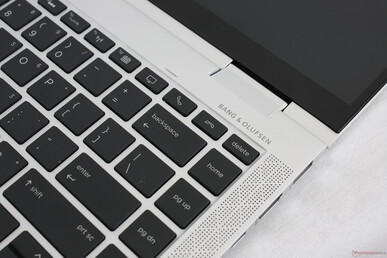
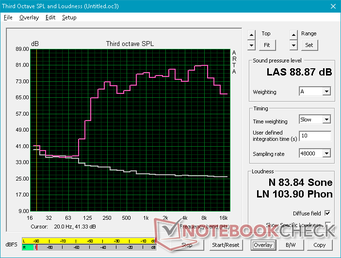
HP Elitebook x360 1040 G5 audio analysis
(±) | speaker loudness is average but good (80.9 dB)
Bass 100 - 315 Hz
(±) | reduced bass - on average 11.3% lower than median
(±) | linearity of bass is average (13.7% delta to prev. frequency)
Mids 400 - 2000 Hz
(+) | balanced mids - only 3.2% away from median
(+) | mids are linear (4.8% delta to prev. frequency)
Highs 2 - 16 kHz
(+) | balanced highs - only 3.6% away from median
(±) | linearity of highs is average (7.2% delta to prev. frequency)
Overall 100 - 16.000 Hz
(+) | overall sound is linear (13.1% difference to median)
Compared to same class
» 6% of all tested devices in this class were better, 2% similar, 92% worse
» The best had a delta of 7%, average was 21%, worst was 53%
Compared to all devices tested
» 12% of all tested devices were better, 3% similar, 85% worse
» The best had a delta of 4%, average was 24%, worst was 134%
Apple MacBook 12 (Early 2016) 1.1 GHz audio analysis
(+) | speakers can play relatively loud (83.6 dB)
Bass 100 - 315 Hz
(±) | reduced bass - on average 11.3% lower than median
(±) | linearity of bass is average (14.2% delta to prev. frequency)
Mids 400 - 2000 Hz
(+) | balanced mids - only 2.4% away from median
(+) | mids are linear (5.5% delta to prev. frequency)
Highs 2 - 16 kHz
(+) | balanced highs - only 2% away from median
(+) | highs are linear (4.5% delta to prev. frequency)
Overall 100 - 16.000 Hz
(+) | overall sound is linear (10.2% difference to median)
Compared to same class
» 7% of all tested devices in this class were better, 2% similar, 91% worse
» The best had a delta of 5%, average was 18%, worst was 53%
Compared to all devices tested
» 4% of all tested devices were better, 1% similar, 94% worse
» The best had a delta of 4%, average was 24%, worst was 134%
Energy Management
Power Consumption
The system is extremely power efficient when on the Power Saver profile at just 2.7 W to explain its very long battery life in the next section below. Maximum brightness takes an additional 4 W and likely even more for the 700-nit SKU.
Running heavy loads like games will demand a relatively constant 39 W from the outlet compared to 54 W on the more powerful MateBook X Pro. Peak power draw can be as high as 50.5 W from the small (~7.5 x 7.3 x 2.9 cm) 65 W AC adapter when running extreme processing loads as shown below. Since the CPU is unable to maintain maximum Turbo Boost indefinitely, power consumption eventually falls after just a few seconds to be in line with our CineBench loop test results above.
| Off / Standby | |
| Idle | |
| Load |
|
Key:
min: | |
| HP Elitebook x360 1040 G5 i7-8650U, UHD Graphics 620, Samsung SSD PM981 MZVLB512HAJQ, IPS, 1920x1080, 14" | HP Elitebook 1040 G4-2XU40UT i7-7820HQ, HD Graphics 630, Toshiba XG4 NVMe (THNSN5512GPUK), IPS, 1920x1080, 14" | Lenovo Yoga C930-13IKB i5-8250U, UHD Graphics 620, SK hynix PC401 HFS256GD9TNG, IPS, 1920x1080, 13.9" | Huawei Matebook X Pro i5 i5-8250U, GeForce MX150, Samsung PM961 MZVLW256HEHP, IPS, 3000x2000, 13.9" | Dell XPS 13 9380 2019 i5-8265U, UHD Graphics 620, SK hynix PC401 HFS256GD9TNG, IPS, 3840x2160, 13.3" | Microsoft Surface Pro 6, Core i7, 512 GB i7-8650U, UHD Graphics 620, Toshiba KBG30ZPZ512G, IPS, 2736x1824, 12.3" | |
|---|---|---|---|---|---|---|
| Power Consumption | -24% | -6% | -23% | -19% | 0% | |
| Idle Minimum * (Watt) | 2.7 | 5.1 -89% | 3.3 -22% | 3.5 -30% | 4.8 -78% | 3.2 -19% |
| Idle Average * (Watt) | 6.5 | 7 -8% | 6.8 -5% | 8.9 -37% | 8.6 -32% | 8.7 -34% |
| Idle Maximum * (Watt) | 11.5 | 11.7 -2% | 9.5 17% | 12.3 -7% | 10.4 10% | 10.4 10% |
| Load Average * (Watt) | 38.7 | 41.2 -6% | 40.8 -5% | 54.2 -40% | 37.9 2% | 29.2 25% |
| Load Maximum * (Watt) | 50.5 | 56.9 -13% | 57 -13% | 52.1 -3% | 48.5 4% | 40.8 19% |
| Witcher 3 ultra * (Watt) | 42.4 |
* ... smaller is better
Battery Life
Runtimes are very long and above average for its category. Expect almost 10.5 hours of real-world WLAN use or one to two hours longer than competing 13-inch Ultrabooks including the XPS 13 and MateBook X Pro. Note that battery capacity is actually smaller than on the last generation EliteBook 1040 G4 (56 Wh vs. 67 Wh) without significantly impacting battery life because of the switch to a more power-efficient Intel U-class CPU.
Charging from empty to full capacity takes between 2 to 2.5 hours compared to 1.5 hours on most laptops. Any of the two USB Type-C ports along the right edge can be used to recharge the system. Note that the AC adapter can be used to quick-charge other USB Type-C devices as well.
| HP Elitebook x360 1040 G5 i7-8650U, UHD Graphics 620, 56 Wh | HP Elitebook 1040 G4-2XU40UT i7-7820HQ, HD Graphics 630, 67 Wh | Lenovo Yoga C930-13IKB i5-8250U, UHD Graphics 620, 60 Wh | Huawei Matebook X Pro i5 i5-8250U, GeForce MX150, 57.4 Wh | Dell XPS 13 9380 2019 i5-8265U, UHD Graphics 620, 52 Wh | Microsoft Surface Pro 6, Core i7, 512 GB i7-8650U, UHD Graphics 620, 45 Wh | |
|---|---|---|---|---|---|---|
| Battery runtime | -20% | -19% | -22% | -27% | -27% | |
| Reader / Idle (h) | 27.9 | 22.5 -19% | 23.9 -14% | 20.7 -26% | 17.2 -38% | 18.1 -35% |
| WiFi v1.3 (h) | 10.4 | 11.1 7% | 9.2 -12% | 9.3 -11% | 8.3 -20% | 8.5 -18% |
| Load (h) | 3.1 | 1.6 -48% | 2.1 -32% | 2.2 -29% | 2.4 -23% | 2.2 -29% |
Verdict
Pros
Cons
The EliteBook x360 1040 G5 is everything we love about the EliteBook x360 1030 G3 but with a roomier 14-inch display. It can be best described as a Spectre x360 13 on overdrive in terms of features and security. You're not going to find another 14-inch convertible with a better keyboard that also just happens to have Thunderbolt 3, 4G LTE, great speakers, a super-bright 700-nit display, and very long battery life. It's as close to an "ultimate" Windows convertible for travelers if there ever was one.
There are a few key disadvantages to keep in mind. Firstly, the unique anti-glare matte touchscreen reduces glare at the heavy cost of increased graininess. Some users may not be bothered by it, but those who are accustomed to crisp glossy screens with fast response times will find the matte touchscreen to be an eyesore. Thankfully, a standard glossy (BrightView) option exists.
Secondly, CPU performance is again below average due to limited Turbo Boost. This hopefully won't become a trend with the EliteBook x360 series as we've discovered similar results on the EliteBook x360 1030 G3. It just doesn't feel right when the cheaper Core i7-8550U in the Lenovo Yoga C930 can outperform the supposedly faster Core i7-8650U in our HP by almost 20 percent.
Lastly, fan noise is higher-pitched than we were expecting from an Ultrabook. We suspect that the small ~30 mm fans are responsible as fan pitch will naturally be higher as diameter decreases. This isn't to say that the laptop is loud, but the fans are noticeable once they start revving.
We highly recommend the EliteBook x360 1040 G5 to not just traveling business users, but also general consumers who may be considering an Ultrabook. Even the least expensive SKU can offer as much as any convertible Ultrabook. Save yourself a few hundred dollars by skipping the Core i7 SKUs and going for the Core i5 SKUs instead. The system can't quite tap the full potential of the Core i7 series because of its limited Turbo Boost.
This is the 14-inch convertible to beat. Its few drawbacks don't detract from the long list of features and hardware options not found on most other subnotebooks including 4G LTE and a 700-nit touchscreen. If GPU performance is a concern, however, then the Acer Swift 7 or Surface Book 2 may make for better alternatives.
HP Elitebook x360 1040 G5
- 10/22/2019 v7 (old)
Allen Ngo




